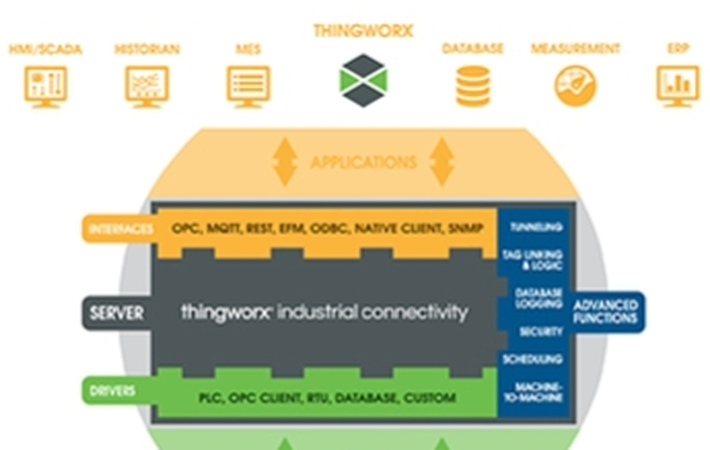
Published on 07/25/2017 | Technology
With ThingWorx 8, integrating all of the end nodes in your plant or industrial operation is now straightforward and easily error-checked. You can easily manipulate data and use it to make real-time decisions ─ without any programming.
Explore more than 20 case studies showcasing how ThingWorx 8 makes it easy to develop powerful IoT solutions that deliver transformative business value.
Connecting everything in the enterprise, regardless of protocol
Simply collecting data is not enough for the modern enterprise. Today’s plants and factories need to be able to easily model, analyze, and visualize data to improve efficiency and outcomes.
For decades, engineers and plant managers have been putting sensors and actuators on machinery to monitor and control performance. Simultaneously, a large variety of specific industrial network protocols were created and implemented; each designed for a specific purpose, with specific performance requirements.
Modern enterprises face the challenge of not only gathering data, but normalizing it across industrial control protocols like MTConnect, electric and water company automation protocols like DNP3, and industrial automation protocols like Profibus, along with dozens more. In addition to the tools being disparate, these networks are typically managed by different people at different levels of responsibility, who used the information for specific purposes. Some feed manufacturing execution system (MES), but much remains local.
To truly get a full picture of performance, and be able to monitor and address issues in real time, enterprises need to leverage industrial connectivity tools.
Getting situational awareness and control
Industrial connectivity allows for the integration all of these pre-existing systems, with their many protocols and devices, in an easy and intuitive way. Each system maintains its own functionality, particularly their local loops and responsive monitoring, while also feeding into higher level processing.
Every device or system with a sensor constantly generates time-and-quality-stamped values called tags. With so many tags to sift through, the trick is finding the useful subset of tags, creating a model from them, and making decisions based on what that model indicates ─ without introducing latency or losing performance. Through KEPServerEX (included in ThingWorx 8) you can map specific device tags back to a digital model to monitor and improve performance.
Benefits of ThingWorx 8 Industrial Connectivity
Fast access
Instead of spending time figuring out how to access your industrial data, with ThingWorx 8 you can focus on analyzing and understanding what your data is telling you about processes and performance.
ThingWorx 8 has industrial connectivity built in, so you can be up and running in minutes. And it provides the Thing Model, a way to model your devices and processes so you can make decisions about them in real time. Its user interface is drag-and-drop, and requires no programming.
Diagnosis and troubleshooting
Of course, industrial connectivity isn’t magic. Wires break, gateways lose connectivity, and signals get blocked. For troubleshooting and addressing these challenges, ThingWorx 8 provides full diagnostic information and services, including the ThingWorx Industrial Connectivity Event Log.
New informational tools
ThingWorx 8 includes a number of new tools that make deriving information easier:
All of these tools make it easier and more intuitive to establish, manage, and use industrial connectivity.
ThingWorx 8 makes it easy
ThingWorx Industrial Connectivity offers a library of more than 150 device drivers, client drivers, and advanced plug-ins, to make it easier to connect to thousands of devices and data sources.
This article was originally posted on the Thingworx blog.
About the author:
Alex Jablokow
Alex Jablokow is a freelance marketing writer who specializes in technical and healthcare business, and blogs about IoT topics.